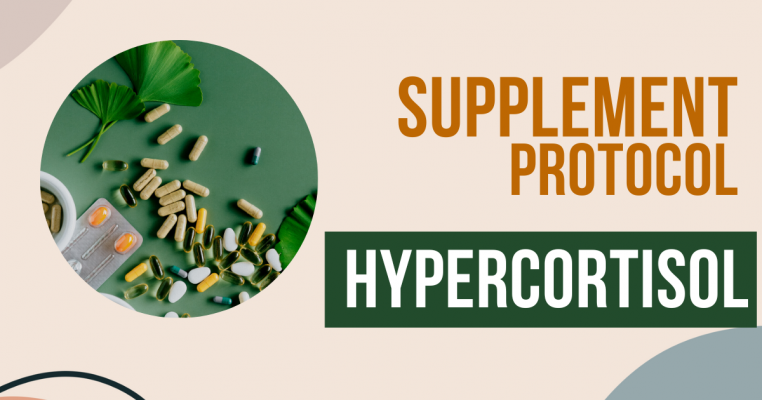Estrogen is a hormone that is produced by the ovaries in women, and it plays a critical role in reproductive health and fertility. Estrogen is responsible for the development of female secondary sex characteristics, such as the breasts and hips, and it is involved in the menstrual cycle and pregnancy.
In addition to the ovaries, estrogen can also be produced by other tissues in the body. Estrogen can be produced by the adrenal glands, which are small glands that are located on top of the kidneys. Estrogen can also be produced by fat cells, which can convert androgens (male hormones) into estrogen.
This post will discuss estrogen metabolism – an important process by which the body breaks down and eliminates estrogen.
Excess estrogen and estrogen which is not metabolized efficiently can have negative health effects, including cancer. It’s important for the body to be able to effectively metabolize and eliminate estrogen.
Factors that Affect Estrogen Metabolism
Estrogen is metabolized in the liver, where it is broken down into various metabolites. The most common estrogen metabolites are estrone, estradiol, and estriol. These metabolites are then eliminated from the body through the urine and feces.
There are several factors that can affect estrogen metabolism – genetics, nutrition, lifestyle and medications/supplements.
Genetics
Certain genetic variations can affect the enzymes that are responsible for estrogen metabolism, and these variations can impact a person’s risk of developing estrogen-related conditions, such as breast cancer.
Nutrition
Diet and nutritional status plays a role in estrogen metabolism. A diet that is high in fiber can support healthy estrogen metabolism, as fiber can bind to estrogen in the digestive tract and help to eliminate it from the body.
Lifestyle / Stress Management
Regular physical activity can support healthy estrogen metabolism, as exercise can increase the metabolism of estrogen and other hormones. Excessive stress also affects estrogen as well as other hormones.
When the body is stressed, it produces the hormone cortisol, which is known as the “stress hormone.” Cortisol can have a range of effects on the body, including the suppression of immune function, the regulation of blood sugar, and the regulation of metabolism. Excess cortisol can suppress the production of estrogen by the ovaries. In addition, cortisol can affect the metabolism of estrogen, and it can increase the breakdown of estrogen in the liver.
Medications & Supplements
Certain medications and supplements can also affect estrogen metabolism. For example, certain drugs, such as tamoxifen and raloxifene, are used to treat breast cancer and other estrogen-related conditions. These drugs can inhibit the metabolism of estrogen, and they can help to reduce the levels of estrogen in the body.
Personal Care Products (Endocrine Disrupting Chemicals – or EDCs)
EDCs can mimic or block the action of hormones, and they can have a range of negative health effects, including an increased risk of cancer, reproductive problems, and developmental issues in children.
EDCs are commonly found in a wide range of consumer products, including personal care products, such as makeup, shampoo, and sunscreen. These chemicals can be absorbed through the skin, and they can enter the body and interfere with hormone function.
Examples of EDCs that are commonly found in personal care products include:
- Bisphenol A (BPA)
- Phthalates
- Parabens
- Triclosan
- Oxybenzone
To learn more about Endocrine Disrupting Chemicals, check out this entry in The Wellness Journal.
Types of Estrogen and Metabolites
There are several different types of naturally occuring estrogen including: estrone (E1), estradiol (E2), and estriol (E3).
Estrone (E1)
Estrone is a form of estrogen that is produced by the ovaries and the adrenal glands. Estrone is less potent than estradiol, and it is the main estrogen produced after menopause.
Estradiol (E2)
Estradiol is the most active form of estrogen, and it is the main estrogen produced by the ovaries. Estradiol is responsible for the development of female secondary sex characteristics, such as the breasts and hips, and it plays a critical role in the menstrual cycle. Estradiol is made in the ovaries and lesser amounts are made elsewhere from DHEA/ Testosterone.
Estriol (E3)
Estriol is the least potent form of estrogen, and it is produced by the placenta during pregnancy. Estriol is responsible for maintaining the pregnancy, and it helps to support the growth and development of the fetus.
Hormone-Mediated Cancer & Estrogen
Estrogen metabolism is an important process that plays a critical role in reproductive health and overall well-being. By understanding the factors that can affect estrogen metabolism, and by making healthy lifestyle choices, you can support healthy estrogen metabolism and reduce your risk of estrogen-related health problems including hormone-medicated cancers.
How your body breaksdown and metabolizes estrogen is valuable to understand. I frequently recommend the DUTCH Test for my clients who have signs of hormonal imbalances or problems sleeping and daytime energy loss.
Breakdown of Estrogens
Estrogens are metabolized in the liver, where they are broken down into various metabolites:
- 16-ohe
- 4-ohe
- 2-ohe
16-alpha-hydroxyestrone is also known as 16-ohe. This metabolite is produced by the enzyme CYP1B1, and it is a potent estrogen that can stimulate the growth of estrogen-sensitive cells, such as breast cancer cells.
High levels of 16-ohe have been linked to an increased risk of breast cancer and other estrogen-related conditions. In addition, 16-ohe can interact with other hormones and chemicals in the body, and it can have a range of other health effects.
2-hydroxyestrone is also known as 2-ohe. This metabolite is produced by the enzyme CYP1A1, and it is a weak estrogen that does not stimulate the growth of estrogen-sensitive cells. In contrast to 16-ohe, which is a potent estrogen, 2-ohe has anti-estrogenic effects, and it can help to balance the effects of other estrogens in the body. High levels of 2-ohe have been associated with a reduced risk of breast cancer and other estrogen-related conditions.
4-hydroxyestrone is also known as 4-ohe. This metabolite is produced by the enzyme CYP1B1, and it is a potent estrogen that can stimulate the growth of estrogen-sensitive cells, such as breast cancer cells.High levels of 4-ohe have been linked to an increased risk of breast cancer and other estrogen-related conditions. In addition, 4-ohe can interact with other hormones and chemicals in the body, and it can have a range of other health effects.
These metabolites have different effects in the body, and they can impact a person’s risk of estrogen-related conditions. Reach out to learn more about the DUTCH Test.

A Step in the Right Direction
Your return to health starts by signing up for an insightful Health Advocacy Session. Learn more about our programs today.
The Wellness Journal







